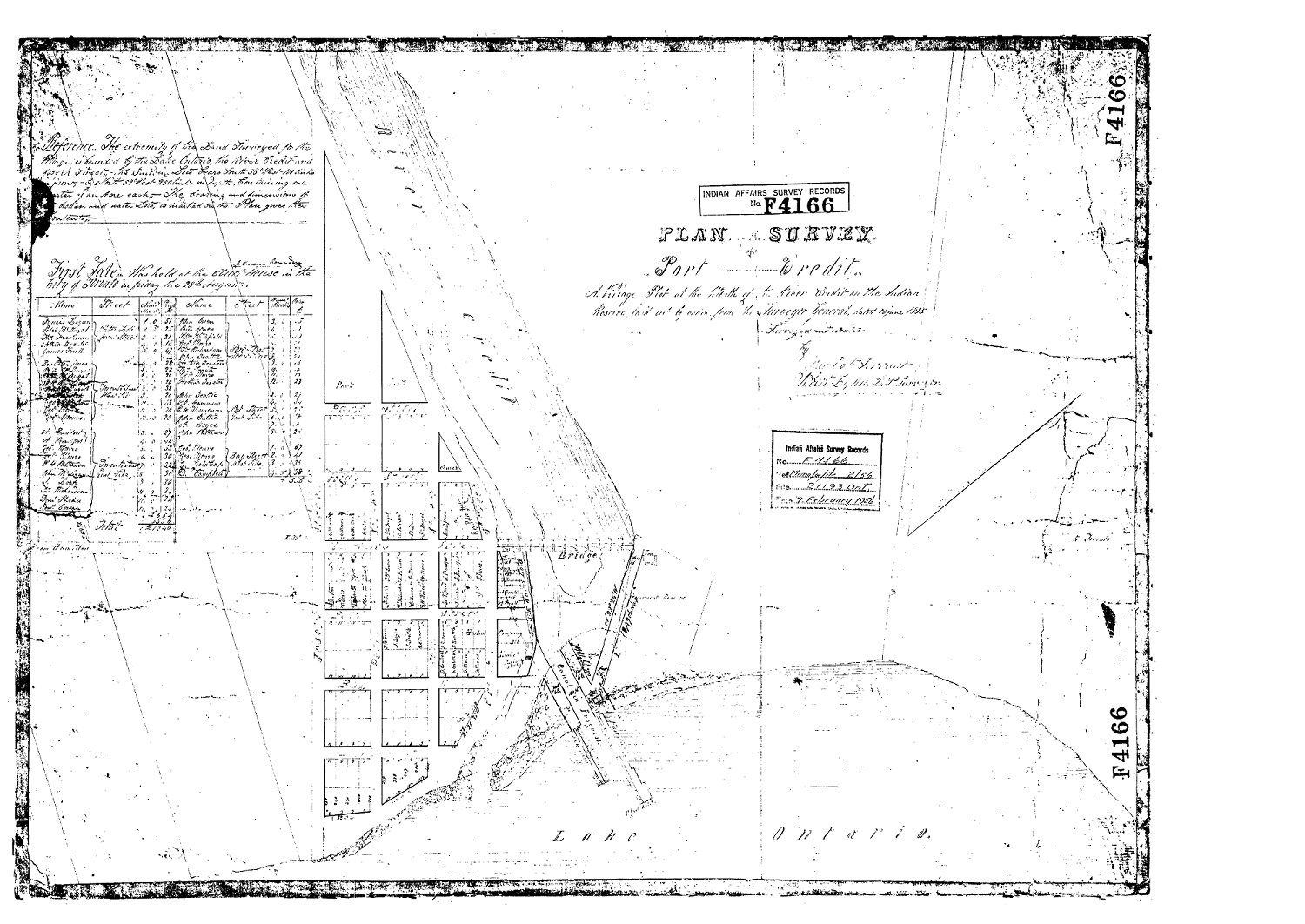John Street in Port Credit was laid out by surveyor Robert Lynn in 1835, and named for John Jones of the nearby Credit Mission Village. John, whose Indigenous name was Thayendanegea (or Tyantenagen), was the elder brother of Kahkewaquonaby (Reverend Peter Jones).

Thayendanegea (1798-1847) and Kahkewaquonaby (1802-1856) were the sons of surveyor Augustus Jones and Tuhbenahneequay, the daughter of Mississauga Chief Wahbanosay.
The elder son received his Indigenous name from his father’s friend, Mohawk Chief Thayendanega (Joseph Brant). Thayendanegea means “he places two bets”.
The brothers spent their early years among their mother’s people along the banks of the Credit River, where they were raised with the Anishinaabe beliefs and language of the Mississaugas and developed hunting and fishing skills.
Their father also took an interest in his son’s welfare. Thayendanegea was baptized as John Jones by Methodist minister William Case in 1809.
In their early teenage years, the brothers were called to live at their father’s farm in Stoney Creek, and in 1817 they accompanied their father to his new farm along the Grand River, near Brantford. John and Peter were sent to school, and John, like his father, pursued surveying as a profession.
When his brother, Peter, converted to Christianity at a Methodist camp meeting in 1823, John became his strongest supporter and ally.
As Peter Jones devoted his life to Methodist Missionary work amongst Indigenous people, John travelled with him, helping to spread the Gospel and serving as a school teacher.
Peter became an exhorter in 1825, an itinerant preacher in 1827, Mississauga Chief in 1829, and was ordained a Minister in 1833. Reverend Peter Jones was the first person of Anishinaabe ancestry to be ordained.
His brother John was with him every step of the way, with his efforts aimed at supporting his brother’s missionary work.
In 1828 John was licenced to exhort by the Methodist Church, along with his uncle Nawahjegezhegwabe (Chief Joseph Sawyer), becoming the first Indigenous persons to be so-licensed after Peter Jones.
John assisted his brother in establishing the Credit Mission Village in 1826 where he served as a school teacher and a Methodist exhorter and translator.

In 1823 he married Kayatontye (Christiana Brant), who was a granddaughter of his namesake, Joseph Brant.
Christiana became a close friend and supporter of Reverend Peter Jones’ English wife, Eliza Field Jones. John and Christiana had five children together, before a series of tragedies struck in the early 1830s.
Christiana died shortly after giving birth in November of 1832, followed two days later by their newborn son.
1834 saw rampant malaria at the Credit Mission, and within months John had lost 3 more children to the disease – Anna, Ella and Elizabeth.
A year later, the only surviving child, Henry, is mentioned as having drowned in the Credit River.
In the midst of this personal turmoil, he served as the secretary treasurer of the newly formed Credit Harbour Company in 1834, until illness set him on a new path.
Heartbroken and suffering from consumption, John resigned as school teacher at the Credit Mission, although he continued to teach Sunday school.
In 1835, and after his recovery, he married Mary Holtby, who was the English-born daughter of a Methodist preacher. The couple would have four children together: Alfred Augustus, Peter, Sarah Alice and John Mathias.
For a time John continued to support his brother’s work at the Credit Mission. In 1840 John was elected as one of the three Mississauga Chiefs at the Credit River, serving alongside his brother Peter and his uncle, Joseph Sawyer.
By 1844, however, it appears that John had moved away from the Credit River, first to Davisville, and later to London.
In 1847 he was serving as a translator for Lt-Colonel Joseph Clench of the Indian Department in the London area of Canada West (Ontario), where John contracted an illness. He passed away on May 4, 1847 at the age of 48.
Reverend Peter Jones, after learning of his brother’s death, wrote: “His loss to me and to the Tribe will never be replaced.”
Reverend Peter Jones is undoubtedly one of the best-known early Indigenous leaders in Ontario, and his remarkable story is recounted on Professor Emeritus Donald Smith’s Sacred Feathers (1987) and Mississauga Portraits (2013).
However, a steadfast supporter of Peter Jones was his brother John.
As Peter’s missionary took him away from the Credit Mission, and overseas, for long periods of time, one gets the impression that John remained the solid rock at home, guiding the Mississaugas in their day-to-day endeavours.
There is no known picture of Thayendanegea (John Jones).
*This article was also in Modern Mississauga: https://www.modernmississauga.com/main/2021/6/23/the-history-of-mississaugas-john-street-and-remembering-thayendanegea



Comments are closed.